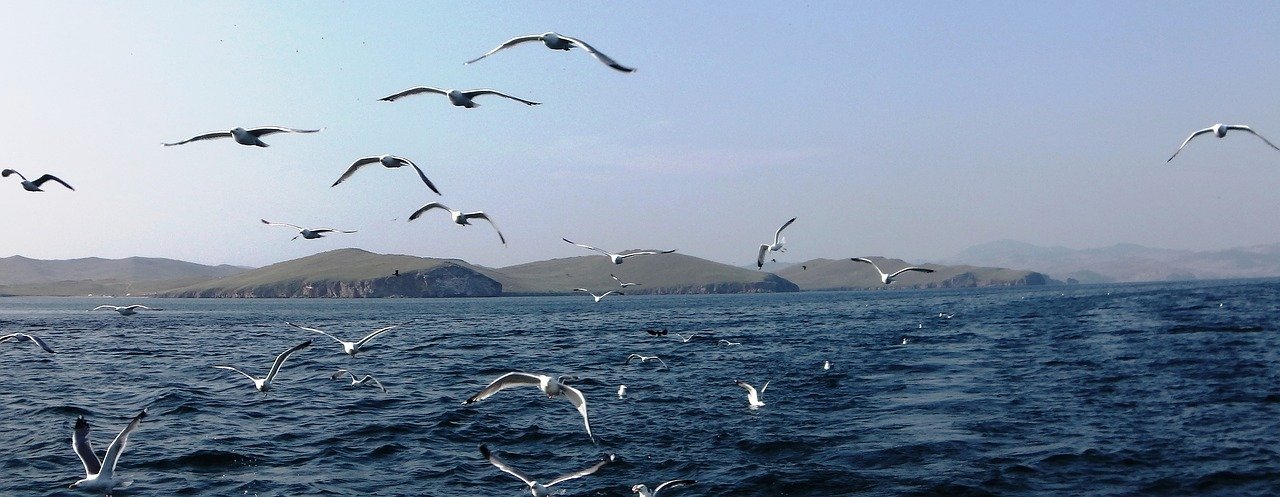
Lake Baikal Fauna and Flora
Baikal, the most endemic lake in the world
The flora and fauna of the lake are unique and very diverse. There is no other lake in which three of the four animal species are not found anywhere else. No other place is home to such a large number of living creatures that are extinct in all other places.
Formed 25 million years ago, it provides a refuge for a wide variety of plant and animal species. About 2000 species of birds nest here and also, a unique marine mammal, the Baikal seal that lives only here. In the mountainous part of Baikal Region the smallest deer in the world is found, musk deer.
The oxygen rich water allows a large number of living organisms to live here; there are over 2,600 species and subspecies of aquatic inhabitants, most of them endemics.
The water column of Baikal is inhabited by more than 58 fish species, such as omul, grayling, whitefish, taimen, baikal sturgeon, lenok and golomyanka, a unique fish consisting of 30% of fat.
Of these plants and animals, 75% are found only in the Lake Baikal region, which makes its conservation crucial.
BAIKAL FAUNA
Baikal’s fauna includes almost all types of animals living in fresh water bodies. There is no other lake in the world with such a great and unique biodiversity. Out of the 2635 known species and varieties of animals and plants found up to now in the lake, almost two thirds are endemic and can’t be found anywhere else in the world. Therefore, Baikal may be considered one of the geographic centers of origin of biological species. Currently there are 53 fish species in Baikal, and only 15 of them are commercially viable. The most famous among them are omul, grayling and whitefish. The Baikal sturgeon is found in smaller amounts and in absolutely insignificant amounts such fish as taimen, burbot, davatchan, lenok, soroga, perch, and ide.
Baikal omul
Protopop Avvakum was the first to praise the fish riches of Lake Baikal. When he came back in the summer of 1662 from Daursky exile he wrote: “And the fish is very dense in the lake: sturgeons and taimen are too fat – you can’t fry it on a griddle: all will be fat. The water is fresh, the fish in it – sturgeons and taimen, sterlets and omuli, and whitefish of other species”. The Baikal omul is the most numerous commercial fish in the Baikal. It also occurs in the Arctic Ocean basin; the Baikal subspecies inhabits Baikal. Omul is a fish of the whitefish genus. There are four populations of omul in Baikal: Selenga, Chivyrkuisk, North Baikal, and Posol. The Selenginsk population is the most numerous of them. The biomass of all age groups of omul is estimated at 25-30 thousand tons. The largest size of omul is 50 cm and its weight is up to 5 kg. The omul lives 24-25 years. Salted omul is the most valuable because of its unique delicate taste.
Holomyanka .
This semi-transparent viviparous fish is of extreme interest. It is the most numerous fish in the Baikal. Its total number and biomass is 2 times greater than that of all other fish. It lives in the water column scattered at all depths from surface waters to the bottom. It is the main food for seals.
The body of the holomyanka is translucent and half fat. The fat content of the great blueback is over 40% of its weight. Therefore, you can read the text in large letters through its tail.HolomyankaHolomyanka gives birth to live larvae, in contrast to all other fish that spawn by spawning eggs. No other fish in the world has the same reproductive system as the dolomyanka.
Barguzin sable
The sable is native to the forests and mountains of Eastern Siberia. Nowadays sable is found all over the taiga part of Russia from the Urals to the Pacific coast. Because of the beautiful, durable and expensive fur, sable is called the king of wild furs – “soft gold”.Animals of the BaikalThe darker the sable, the more valuable its pelts. The Barguzin sable is the darkest of all the Siberian furs and thus is highly valued at international fur auctions.
The body length of a sable is up to 56 cm, and the tail length is up to 20 cm. It is most active in the morning and evening. Rarely rises into the crown of trees, more often stays on the ground in shrubbery and among stone placers. Often inhabits cedar forests and the upper reaches of mountain rivers.
At the traditional international fur-coat auction in St. Petersburg a sable skin in the early 90-ies was worth over $ 100, in the late 90-ies the price fell to $ 62 per skin. In developed countries, natural fur is increasingly being replaced by artificial fur.
BAIKAL BIRDS
Of the birds in Baikal, mainly various species of ducks are found. Ducks often gather in large flocks, which are often seen on the water while sailing on Baikal. The rocky islands of Baikal are inhabited by gulls in large numbers. Cormorants are also characteristic of the open Baikal. There are especially a lot of birds in deltas and shallow bays. Less frequent on the shores of Lake Baikal are also geese and whooper swans. Here and there, the gray heron and the black-throated loon can be seen.
The Eagle
The eagle, the bird of Baikal legends, is especially worshipped by the Buryat population. The cult of the eagle has its roots in a very ancient myth, according to which the first person to receive the gift of shamanism was the son of the formidable spirit of Olkhon Island, who lived in the form of a white-headed eagle. That is why the Buryats still sacredly believe that a person who kills or wounds an eagle will certainly die soon. Perhaps, the belief in the sanctity of the bird has helped to preserve the rare species, which is rapidly diminishing elsewhere on the planet. Olkhon Island is the only place in Baikal where the population of the eagle hasn’t changed significantly during the last decade.
There are seven species of eagles in the Baikal region: the golden eagle, the Imperial Eagle, the Steppe Eagle, the Greater Spotted Eagle, the Pygmy Eagle, the White-tailed Eagle, and the Long-tailed Eagle. Such diversity and abundance of “eagle birds” is not observed anywhere else in North Asia.
One of the most beautiful and majestic birds of prey is the white-headed eagle – the Imperial Eagle. In all Western European countries the Imperial Eagle is called the Imperial Eagle. Its wingspan reaches 2 m. It lives up to 100 years.
Eagles almost always nest high in the trees, usually on the edges of the forest in the same places for many decades. The diameter of perennial nest-buildings can reach 2 meters. Nestlings appear in late May or early June, and young birds stay in the nesting area until late August. Eagles migrate south for the winter.
You can see the wildlife of the Baikal region in all its diversity in the nature reserves and sanctuaries of the Baikal region.
BAIKAL FLORA
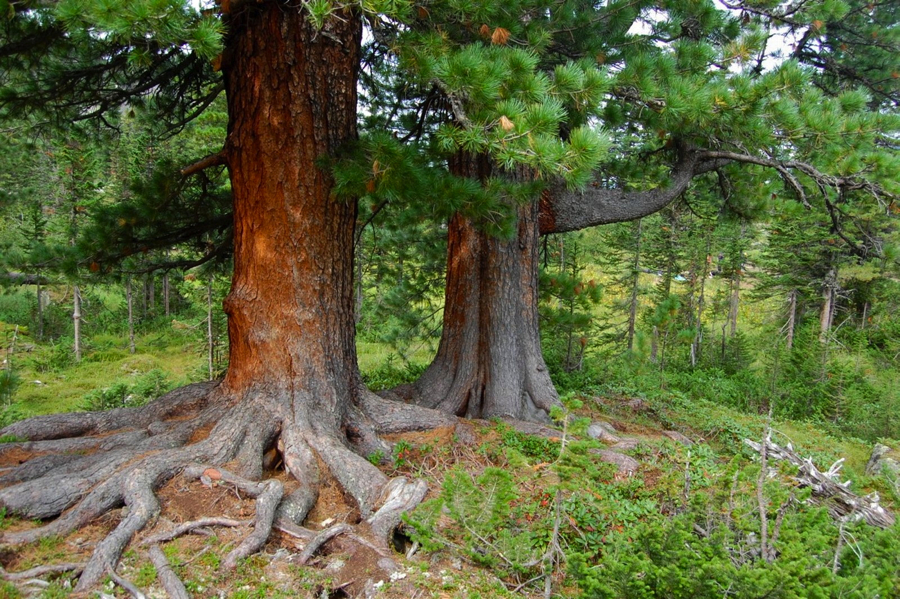
Siberian Cedar
Cedar is 35-40 m tall, with a trunk diameter of up to 1.8 m and lives up to 500 years. It is known first of all thanks to its pine nut, which is abundantly harvested every 5-6 years. The local population called it the bread tree of Siberia.
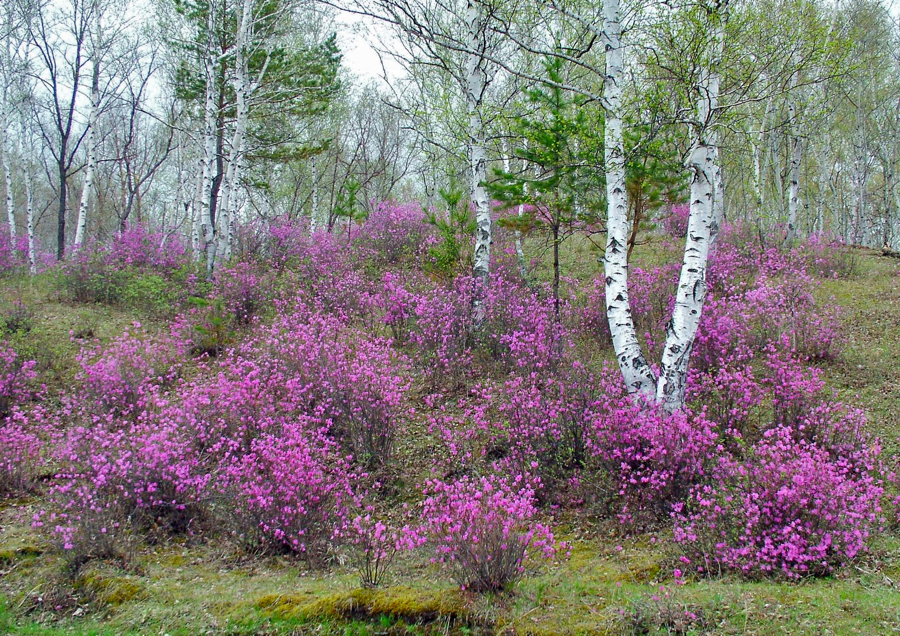
Wild Rosemay
Here, the flowering of wild rosemary (Rhododendron dauricum) is synonymous with the coming of spring. The huge amount of pink flowers, when there is still no visible green foliage, creates the impression of a flower garden on the banks of the Baikal. Rosemary grows throughout Eastern Siberia, often forming thickets. It blooms in May, June.
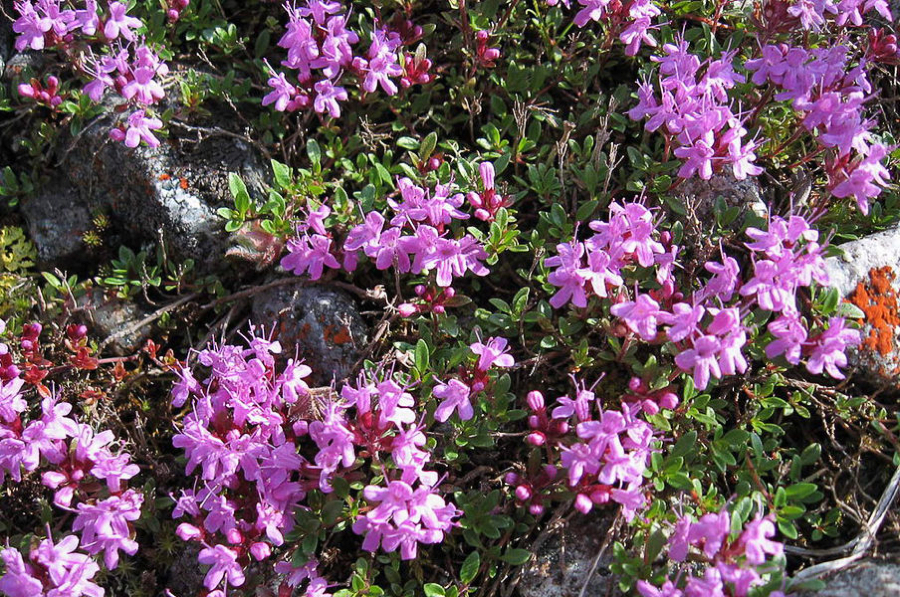
Thyme (Thymus serpyllum)
Widespread here, even in the Transbaikal regions, thyme blooms from June to August. It grows on rocky slopes, open sandy places, steppe meadows. It is difficult not to notice the pink spots of flowers on the sandy hills. The thyme plant contains up to 1 percent essential oils and, if you crush the branch in your hands, you will get a strong characteristic smell. Thyme infusions and decoctions are widely used in folk medicine to treat various diseases, including prolonging life, as a general tonic for the immune system, with nervous disorders and insomnia. It is also used in shamanic rituals: a tip of dried thyme is thrown into the fire by a shaman during a purification ritual.
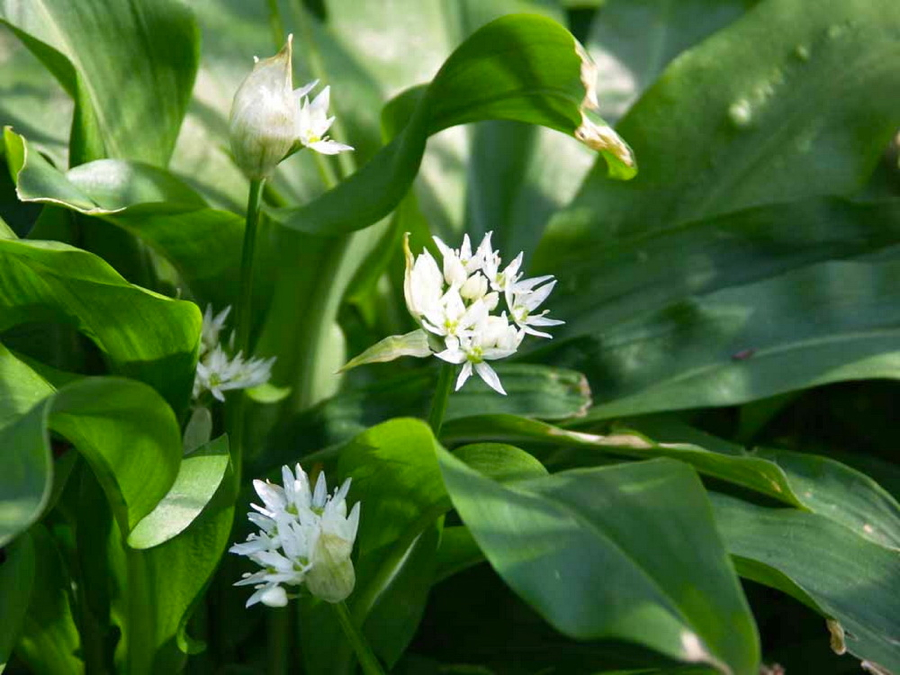
Wild onion, Allium victorialis
Also known as victory onion or alpine leek, it is cultivated in almost all the districts of Lake Baikal. It is sold in the markets in May to June, when the stems and leaves are the softest and juiciest. Fresh wild onion is widely used in salads, for stuffing pies, in the preparation of meat dishes, as a replacement of onion. For storage, wild onion is finely chopped and salted like cabbage. It is consumed as a salad with sour cream or mayonnaise. It has a garlicky smell and stimulates the appetite.
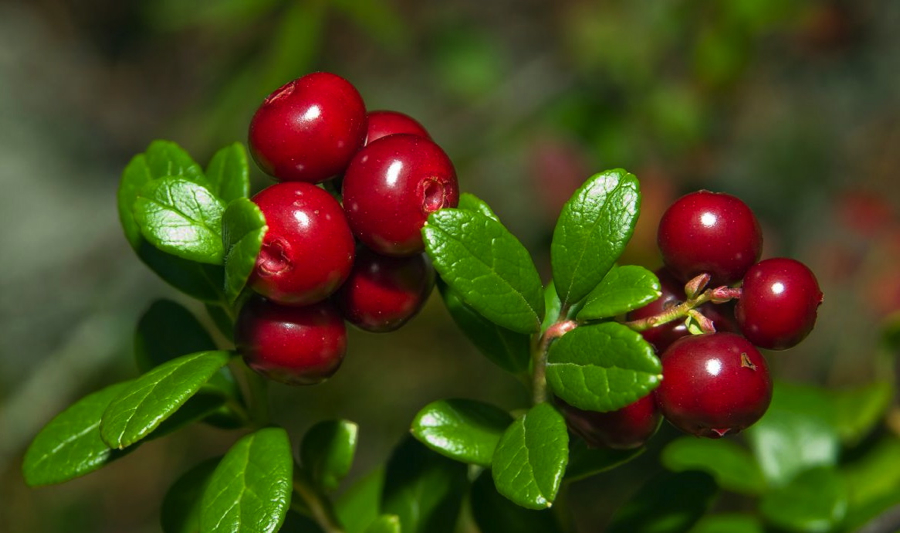
Lingonberry (Cowberry)
Lingonberries are quite widespread in the forests of Siberia. They are harvested in August, September when they ripen. With a good harvest, the grain grower collects a full bucket in 2-3 hours. Lingonberry is a well-known home remedy. Lingonberry jam is a good diaphoretic. In the form of decoctions or juice, it is used as an antipyretic agent.
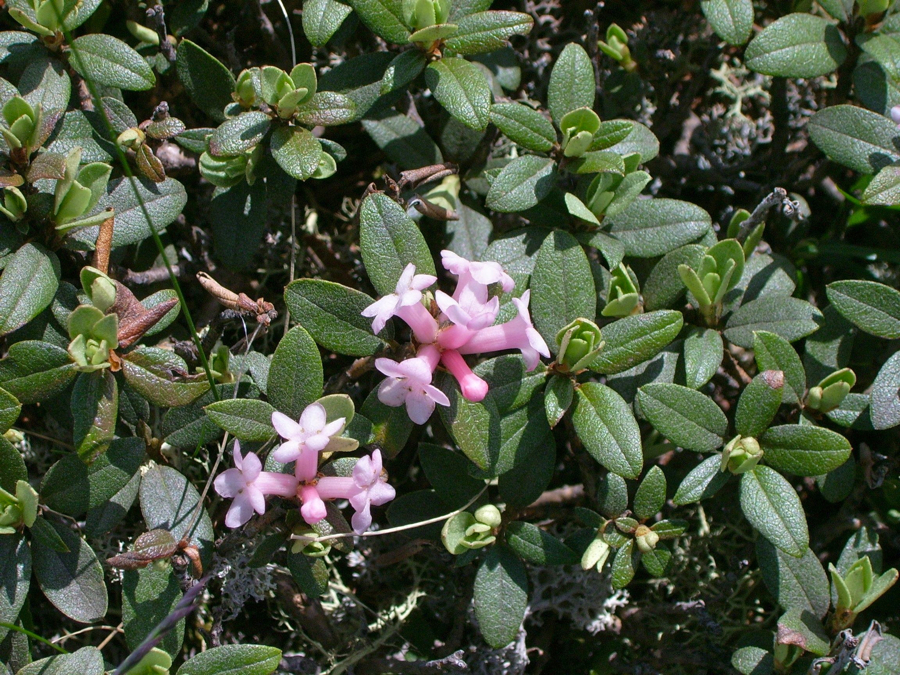
Rhododendron adamsii
It grows in the high areas on the rocky slopes of the Eastern Sayan, Khamar-Daban, on the Barguzin ridge. It blooms in the second half of June and in July. The apical parts with leaves of the plant are harvested from the beginning of flowering until the formation of fruit and are dried in the shade. The local population of Buryat widely uses sagandailu as a tonic and stimulant.